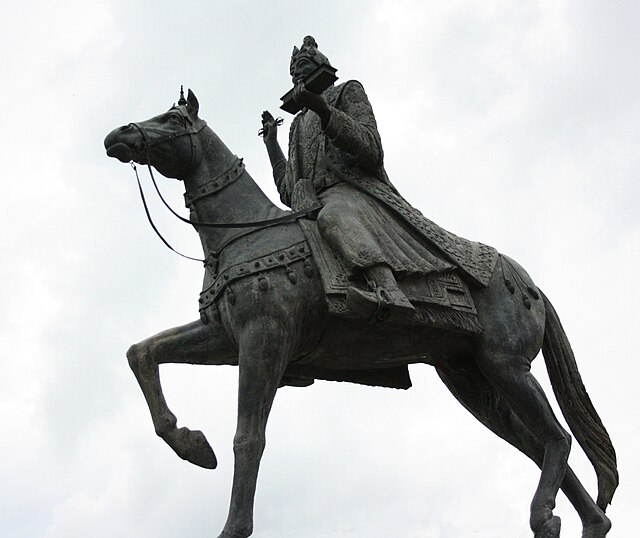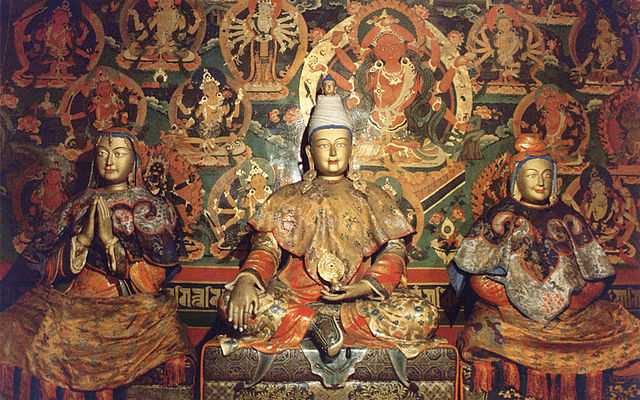Songtsen Gampo, also Songzan Ganbu, was the 33rd Tibetan king of the Yarlung dynasty and he established the Tibetan Empire. As the first of three Dharma Kings of Tibet, he formally introduced Buddhism to Tibet, and built the Jokhang with the influence of his Nepali queen Bhrikuti, of Nepal's Licchavi dynasty. He unified several Tibetan kingdoms, conquored lands adjacent to Tibet, and moved the capitol to the Red Fort in Lhasa. His minister Thonmi Sambhota created the Tibetan script and Classical Tibetan, the first literary and spoken language of Tibet.
Statue of King Songtsen Gampo on horseback in front of the Songtsen Library in Dehradun, India
The Songtsen Library in Dehradun, India collects, preserves and makes accessible ancient Tibetan and Himalayan religious, cultural and historical documents
The burial mound of Songtsen Gampo surrounded by cultivated fields, (Chyongye Valley, 1949)
Songtsen Gampo (center), Bhrikuti Devi of Nepal (left) and Princess Wencheng (right)
The Tibetan script is a segmental writing system (abugida) of Indic origin used to write certain Tibetic languages, including Tibetan, Dzongkha, Sikkimese, Ladakhi, Jirel and Balti. It has also been used for some non-Tibetic languages in close cultural contact with Tibet, such as Thakali and Old Turkic. The printed form is called uchen script while the hand-written cursive form used in everyday writing is called umê script. This writing system is used across the Himalayas and Tibet.
A text in Tibetan script suspected to be Sanskrit in content. From the personal artifact collection of Donald Weir.





